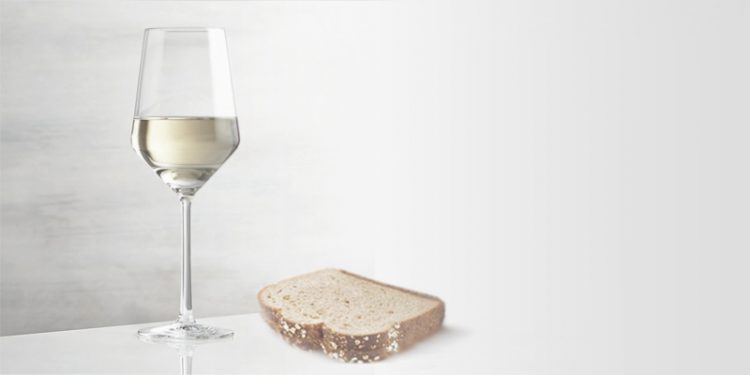
A torso, transparent, with arms extended to the sides, hangs suspended over the table where Jesus sits with 12 figures, commonly thought to be his disciples. Jesus, also transparent, points to the figure above him.
Whose torso is it? Christ ascended? God? Does it matter?
Salvador Dali’s 1955 masterpiece, “The Sacrament of the Last Supper,” portrays the scene in a way unlike any other representation. And Jesus was “made known to them in the breaking of the bread.”
In this story from Luke, the disciples walked with Jesus on the road to Emmaus just a few days after the resurrection but didn’t realize who he was. Not until they shared bread and wine with him later that evening. It was through the Eucharist that he became known to them. What about us? What happens to us when we share the Eucharist? How do we experience that closer presence of Jesus?
Many years ago, I went to the doctor with problems that I assumed he could remedy with medicine. Instead, it turned out that I needed surgery, and we scheduled the operation for a couple of weeks later. At the time, the doctor wasn’t sure what he would find, so he couldn’t predict with certainty what he was going to do once we were in the operating room. Worries plagued me: the daily remembering when I first woke up that I had major surgery to undergo. And the uncertainty of what was going to have to be done during the operation.
In the days before going to the hospital, my appetite was off. One evening, as I was getting ready to go to bed, I was hungry but not for any kind of snack that I would normally have chosen. Instead, I got what appealed to me: a piece of bread and a glass of white wine. And on the way up the stairs to my room, I saw in an instant that what I had in my hands was the sacrament. The bread and the wine. And instantly I knew with unvarnished clarity that all would be well. That the surgeon would see what needed to be done and do it. Peace flowed into me and filled me up, and that clarity stayed with me throughout the waiting period as I anticipated the surgery and then eventually entered the operating room.
When I woke up, my doctor was right by my bed and told me that all was well. He told me what had been causing my problems and what he had done about it. And that he really wanted me to keep my plans to go to the beach in a couple of weeks. Insisted on that repeatedly.
The Eucharist. What is it to us? Do we come to recognize Jesus more clearly as we share that holy meal? For me that night on the stairs with that strange and marvelous snack, it was Jesus living within that piece of bread and that glass of wine and emerging to give me clarity, to give me peace.
In the Anglican liturgy, the priest holds the consecrated bread high and breaks it, proclaiming that “Christ our Passover is sacrificed for us.” And the people respond, “Therefore let us keep the feast.” What happens in that moment? What comes from Jesus’ broken body?
For me that night, it was peace, comfort, clarity. For you, it may be many other qualities of Christ and it may vary from one communion to another. For me it is also the risen Christ that emerges from the brokenness. The risen Christ that is still here with us, just as he promised he would be. To govern, to forgive, to guide, to comfort, to heal. And to bring peace. his last gift to us.
The transparent torso hangs suspended over us, too, whenever we gather to break the bread, bless it and the wine, and partake of it together. The arms extended above us, sheltering us, protecting us, keeping us in that holy love. Even if we can’t see those arms, we can sense them. We know they’re there.
Because Jesus has made himself known to us in the breaking of the bread. And because we recognize Jesus in the breaking of the bread. In the breaking of the bread, we look at Jesus, and he looks at us, and we know each other with an intimacy beyond telling – fully, deeply and without reserve.
Visit our earlier post, Rocka My Soul, to see Dali’s masterpiece.
Katherine ElberfeldMay 11, 2017Blog
